#new year scotland
Text
Historical Hogmanay (Scottish New Year)

Hogmanay is the name for the Scottish New Year Eve, and was once thought to be a time when the veil was thin, allowing all sorts of creatures from the Otherworld into ours. Some theorize that this supernatural aspect is even where the name came from.
“We know that on this night it was considered necessary to propitiate the dwellers in fairy-land, who, with the Phynnodderees, Witches, and Spirits of all kinds, were abroad and especially powerful. We may, therefore, perhaps translate Hog-man-aye into Hanga-man-ey–“mound-men (for) ever,” the Fairies being considered as dwellers in the hows (or tumuli, or green mounds)…-“
The Folk-Lore of the Isle of Man by A. W. Moore[1891]
The pagan roots of the festival were once clear, and some locations held onto those traditions longer than others. For example, the Isle of Man once had a person puppet a horses head made of wood that was called White Mare.
“He went round the table snapping the horse’s mouth at the guests who finally chased him from the room, after much rough play.”
The Folk-Lore of the Isle of Man by A. W. Moore[1891]
Similarly, some places in Scotland had a person in a cows hide who would be chased around the house by people with sticks.
“Each then pulled off a piece of the hide, and burnt it for the purpose of driving away disease.”
The Folk-Lore of the Isle of Man by A. W. Moore[1891]
Many of the traditions have died out, while others might still seem familiar.
Fires
For some on the last day of the year, the fire was to be smothered and made smooth. First thing in the morning, you would look for prints in the ash.
“The first thing on New Year’s morning was to examine if there was in the ashes any mark like the shape of a human foot with the toes pointing towards the door. If there was such a mark, one was to be removed from the family before the year was run. Some climbed to the roof of the house and looked down the “lum” for the dreaded mark.”
Notes on Folk-Lore of the North-East of Scotland by Walter Gregor, M.A. (1881)
For others, the fire was not allowed to go out all night.
"It was a practice not to be neglected to keep the fire alive in the house all night. No one was to come near it but a friend, and, as an additional security against its going out, candles were kept burning. Hence, the other name given to the night, Oidhche Choinnle, i.e. candle night."
Witchcraft & Second Sight in the Highlands & Islands of Scotland by John Gregorson Campbell (1902)
If the fire did go out, you would be on your own. It was considered unlucky to give out fire on the first day of the year, so your neighbors would be unlikely to assist.
“It gave the means to witches and evilly-disposed people to do irreparable mischief to the cattle and their produce. The dying out of the fire was, therefore, a serious inconvenience in days when lucifer matches were unknown.”
Witchcraft & Second Sight in the Highlands & Islands of Scotland by John Gregorson Campbell (1902)
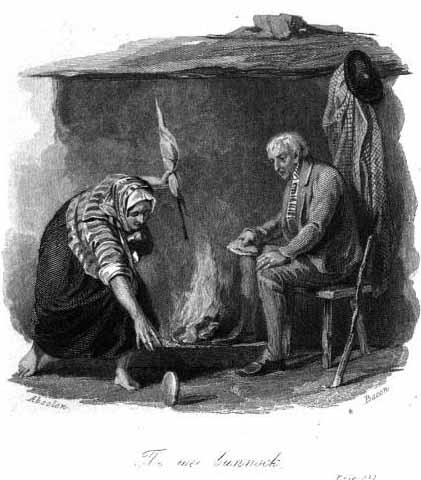
Juniper Saining
“On New Year’s day the Highlanders burned juniper before their cattle.”
Old Scottish Customs, Local and General by Ellen Emma Guthrie 1885
Saining is a set of practices to cleanse or ward off evil, and juniper smoke is one example of it. Saining could be done at any time of year, but it was though to be stronger during times when the veil was thin.
Every room was cleansed with the smoke, and so were humans and cattle.
“Stewart in his “Popular Superstitions of the Highlands of Scotland” tells how on the last night of the year the Strathdown Highlanders used to bring home great loads of juniper, which on New Year’s Day was kindled in the different rooms, all apertures being closed so that the smoke might produce a thorough fumigation.
Not only human beings had to stand this, but horses and other animals were treated in the same way to preserve them from harm throughout the year. Moreover, first thing on New Year’s morning, everybody, while still in bed, was asperged with a large brush.”
Christmas in Ritual and Tradition, by Clement A. Miles, [1912]
Mumming
Mumming or guising is something people tend to associate with Halloween (trick-or-treating), but it also happened on Christmas and Hogmanay. Mummers (commonly poor folk) would entertain in exchange for food and drink.
Here is an example of just one rhyme:
“Get up, goodwife, and shake your feathers,
And dinna think that we are beggars;
For we are bairns come out to play,
Get up and gie’s our hogmanay!”
Christmas in Ritual and Tradition, by Clement A. Miles, [1912]
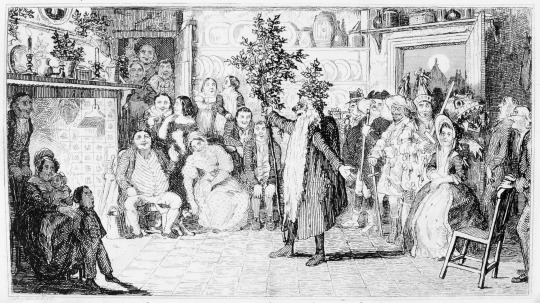
Drinking
This is something people will recognize; drinking. People would get together with food and drinks (typically het pint).
“On the approach of twelve o’clock, a hot pint was prepared—that is, a kettle or flagon full of warm, spiced, and sweetened ale, with an infusion of spirits.
When the clock had struck the knell of the departed year, each member of the family drank of this mixture ‘A good health and a happy New Year and many of them’ to all the rest, with a general hand-shaking.”
Christmas in Ritual and Tradition, by Clement A. Miles, [1912]
When midnight hit, you would share with neighbors.
"Even the poorest in Scotland exchange sips of hot spiced ale, and make offerings of cakes, buns, and shortbread to their neighbours when ushering in the New Year on the stroke of midnight."
Manners, Customs, and Observances: Their Origin and Significance by Leopold Wagner[1894]

First Footing
Who was first to enter your home on the new year could alter your luck for the year.
“The first-footers are off and away, flying in every direction through the city, singing, cheering, and shaking hands with all and sundry.”
Christmas in Ritual and Tradition, by Clement A. Miles, [1912]
For many places, you would hope it to be a dark-haired man.

#hogmany#hogmanay#new year#new years#scottish#scotland#scottish new year#new year scotland#pagan#paganism#scottish paganism#scottishpaganism#historic#history#historical#Festivals#PaganScotland#pagan scotland#scottishpagan#ImportantScottishDays
31 notes
·
View notes
Text

Welcome, 2024.
Last year I moved to another country, to the coast. Where I live now, there are rainbow clouds on the sky sometimes. The world still has wonder in it.
To a better, kinder, more peaceful, more just year.
702 notes
·
View notes
Text
youtube
Watch the 2024 American Climate Leadership Awards for High School Students now: https://youtu.be/5C-bb9PoRLc
The recording is now available on ecoAmerica's YouTube channel for viewers to be inspired by student climate leaders! Join Aishah-Nyeta Brown & Jerome Foster II and be inspired by student climate leaders as we recognize the High School Student finalists. Watch now to find out which student received the $25,000 grand prize and top recognition!
#ACLA24#ACLA24HighSchoolStudents#youtube#youtube video#climate leaders#climate solutions#climate action#climate and environment#climate#climate change#climate and health#climate blog#climate justice#climate news#weather and climate#environmental news#environment#environmental awareness#environment and health#environmental#environmental issues#environmental education#environmental justice#environmental protection#environmental health#high school students#high school#youth#youth of america#school
17K notes
·
View notes
Text
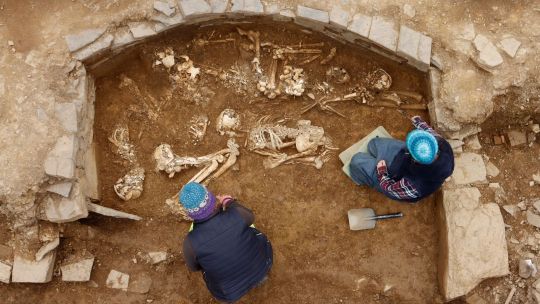
'Incredibly Rare' 5,000-Year-Old Tomb Discovered in Orkney, Scotland
A three-week excavation took place at the Neolithic site at Holm.
Archaeologists have discovered the ruins of an "incredibly rare" 5,000-year-old tomb in Orkney.
Fourteen articulated skeletons of men, women and children were unearthed at the Neolithic site at Holm on the mainland.
Experts from National Museums Scotland (NMS) and Cardiff University also uncovered additional human bones following a search for the tomb's precise location.
Volunteers and students from the University of Central Lancashire made other discoveries during the three-week excavation, including finding further remains, pottery, stone tools and a bone pin.
NMS said the Neolithic site had been buried beneath a pasture field after it had been largely destroyed without record in the late 18th or early 19th century to supply building stone for a nearby farmhouse.
In 1896, the farmer's son found eight skeletons at the site alongside traces of walling, a stone macehead and ball.

The Orcadian's report on the discovery featured local antiquary James Walls Cursiter, who speculated that the site was a ruined tomb - which prompted the location of the 2023 search.
The excavation was led by Dr Hugo Anderson-Whymark, of NMS, and Professor Vicki Cummings, of Cardiff University.
It targeted anomalies recorded via a geophysical survey undertaken in 2021.
It revealed traces of a cairn more than 15m in diameter, which contained a stone structure accessed through a 7m-long passage.
The archaeologists said a stone chamber lay at the centre of the cairn, and this was surrounded by six smaller side cells that once had corbelled stone roofs.
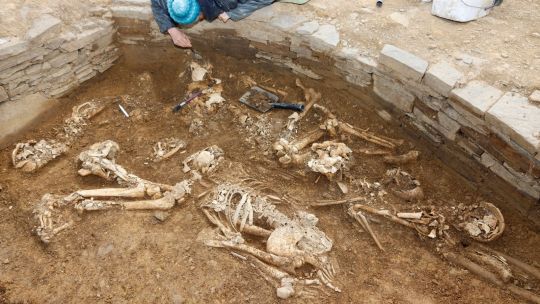
These features allow the tomb to be classed as a "Maes Howe-type" passage grave.
Only 12 tombs of this type are known in Orkney - including Maes Howe, Cuween and Quoyness - and are considered the "pinnacle of Neolithic engineering" in northern Britain.
Dr Anderson-Whymark said: "Orkney is exceptionally rich in archaeology, but we never expected to find a tomb of this size in a such a small-scale excavation.
"It's incredible to think this once impressive monument was nearly lost without record, but fortunately just enough stonework has survived for us to be able understand the size, form and construction of this tomb."


Professor Cummings added: "The preservation of so many human remains in one part of the monument is amazing, especially since the stone has been mostly robbed for building material.
"It is incredibly rare to find these tomb deposits, even in well-preserved chambered tombs, and these remains will enable new insights into all aspects of these peoples' lives."
By Jenness Mitchell.

#'Incredibly Rare' 5000-Year-Old Tomb Discovered in Orkney Scotland#ancient tomb#ancient grave#ancient artifacts#archeology#archeolgst#history#history news#ancient history#ancient culture#ancient civilizations
195 notes
·
View notes
Text
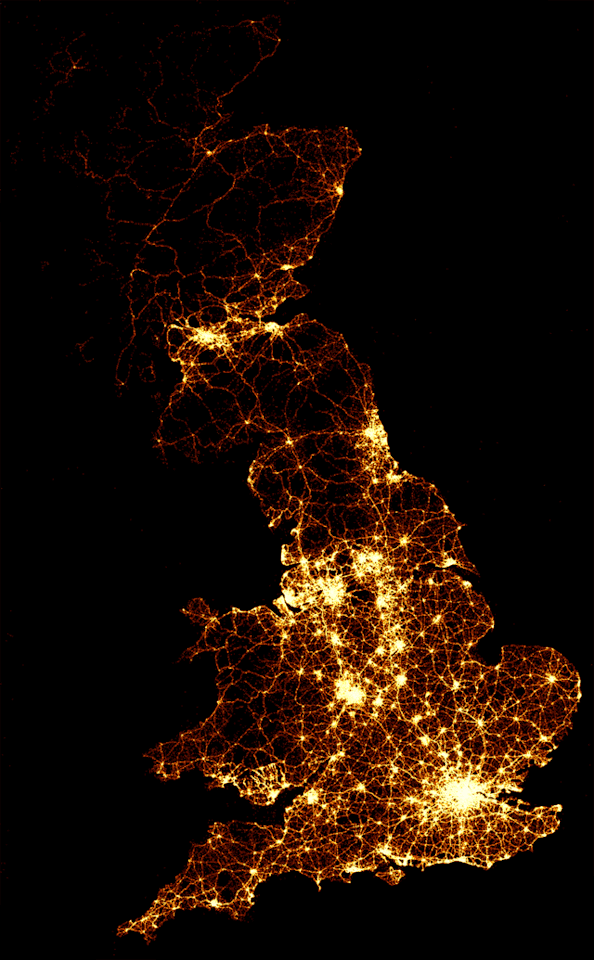
A tender good-night to my British friends & followers. Here's to a Happy New Year of peace & prosperity throughout the Anglosphere.
#Happy New Year#1 January 2024#night map of Britain#UK#England#Scotland#Wales#satellite photo#Anglosphere
136 notes
·
View notes
Text

Happy New Year guys ⭐️
#scottish#scotland#blue eyes#full lips#aesthetic#biseuxal#bed is life#im in my pjs#ny2024#new year 2024#happy new year
113 notes
·
View notes
Text
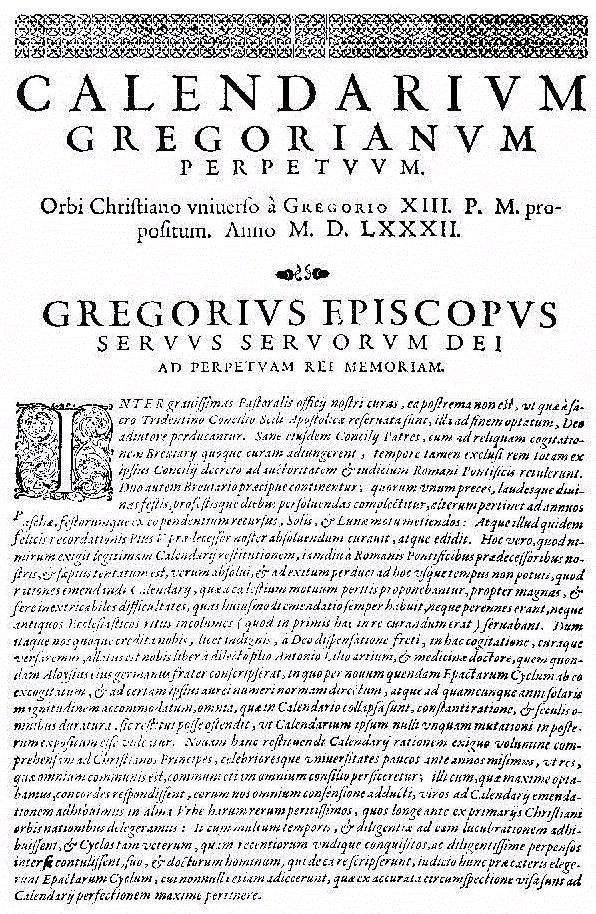
On January 1st 1600 Scotland celebrated the New Year for the first time on this date.
Scotland actually adopted January 1 as New Year’s Day in 1600 when it switched from the Julian calendar to the Gregorian calendar. England wouldn’t do this until 1752. Under the Julian calendar, the new year began on March 25th.
The Julian calendar, had been used throughout the Christian world since ancient times. But by the 16th century, scientists agreed that the old calendar improperly calculated the length of a year and was therefore falling gradually behind. During the reign of Pope Gregory XIII, a new calendar was created, called the Gregorian calendar. The new calendar, which began the year on January 1st, was adopted by most of Europe in 1582, but England and Henry VIII had broken with Rome and therefore did not adopt the new calendar.
The Scottish government decided that January 1st made a better New Year’s Day than March 25th, so the decision was made to make January 1, 1599 the new January 1st, 1600. As a result, 1599 had only nine months.
Most of Europe adopted the Gregorian calendar in 1582 and 10 days were dropped from the calendar. Though Pope Gregory’s papal bull reforming the calendar had no power beyond the Catholic Church, Catholic countries—including Spain, Portugal and Italy—swiftly adopted the new system for their civil affairs. European Protestants, however, largely rejected the change because of its ties to the papacy, fearing it was an attempt to silence their movement. It wasn’t until 1700 that Protestant Germany switched over, and England held out until 1752.
Scotland did not follow suit completely, we kept the same amount of days as the Julian calendar, so year after year in Scotland, as in England, the Julian calendar fell gradually further and further behind so we had changed New Years Day but technically we were still using The Julian calendar, this continued until 1752 when Westminster implemented The Gregorian calendar and dropped 11 days. The last European country to adopt the reform was Greece as recently as 1923.
Another wee New year fact is that The Guinness Book of World Records has listed “Auld Lang Syne” as the world’s most-sung melody, even more than “Happy Birthday.” Poet Robert Burns actually transcribed the lyrics from an older Scottish folk song, and it was later paired with the music to create the traditional song we know so well. Radio play in American starting in 1929 helped to popularize the song on this side of the Atlantic and contributed to it becoming a tradition worldwide.
The pic shows the first page of the papal bull “Inter Gravissimas” by which Pope Gregory XIII introduced his calendar.
29 notes
·
View notes
Text
youtube
Watch the American Climate Leadership Awards 2024 now: https://youtu.be/bWiW4Rp8vF0?feature=shared
The American Climate Leadership Awards 2024 broadcast recording is now available on ecoAmerica's YouTube channel for viewers to be inspired by active climate leaders. Watch to find out which finalist received the $50,000 grand prize! Hosted by Vanessa Hauc and featuring Bill McKibben and Katharine Hayhoe!
#ACLA24#ACLA24Leaders#youtube#youtube video#climate leaders#climate solutions#climate action#climate and environment#climate#climate change#climate and health#climate blog#climate justice#climate news#weather and climate#environmental news#environment#environmental awareness#environment and health#environmental#environmental issues#environmental justice#environment protection#environmental health#Youtube
17K notes
·
View notes
Text


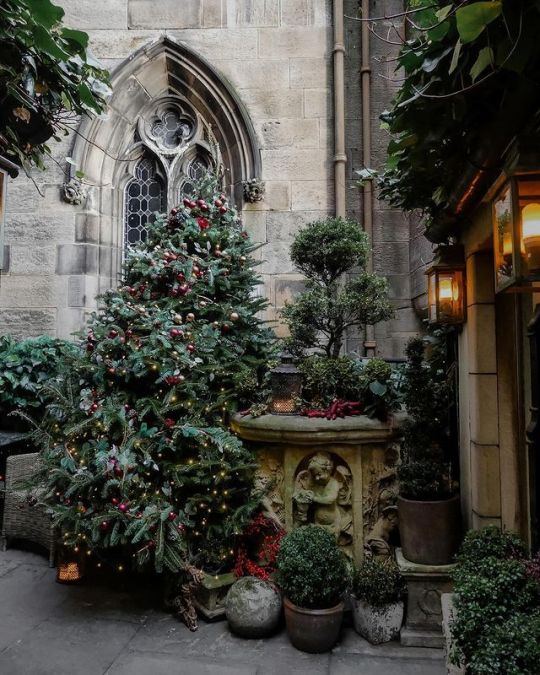

End of the year in Edinburgh
(happiness_behind_the_lens)
#gothic#gothic architecture#gothic church#neo gothic#gothic revival#winter#christmas#new year#new years#edinburgh#lothian#lowlands#scotland#britain#great britain
22 notes
·
View notes
Text






Glasgow Necropolis!!
Absolutely gorgeous! I'm so glad I had time to see it and the weather was awesome too <3
#glasgow#glasgow necropolis#scotland#still can't believe that i was crushing on a scotsman for 5 years but it took a new zealander to finally actually make me go there 'xD
26 notes
·
View notes
Text

7 months ago I had never heard of Glögi, now I’m 160 days Finnish duolingo and it’s part of my vocabulary!
#Käärijä’s favourite drink#hoping Lidl Scotland will stock some so I can try it#what a year 2023 has been for learning something new#käärijä#duolingo#finnish
30 notes
·
View notes
Text
y'all. Y'ALL IN 18 DAYS ART HEIST BABY TURNS ONE
#WHAT THE FUCK!!!!!!!!!!!!!!!!!!!!!!!!!!!!!!!!!!!!!!!!!!!!!!!!!!#A YEAR?#365 DAYS#actually this time one year ago i was sobbing in my dorm room bc my DREAM law school rejected me xx#in another life im in new york city rn which is hot but#i also wouldn't be getting a masters degree or be in scotland so#it all works out for the best#but jesus christ a year has gone by so quickly and so much has happened. if only i could tell past nat what's in store for her#she'd probably freak out tho. LMFAOO#and i am still going to law school but that's a convo for another time <- just had 2 put that out there tho#nat speaks#art heist baby!
74 notes
·
View notes
Video
“What is a "canty day", Dennis?'
'I've never troubled to ask. Something like hogmanay, I expect.'
'What is that?'
'People being sick on the pavement in Glasgow.'
'Oh.”
- Evelyn Waugh, The Loved One
Haud Hogmanay everyone.
Lang may yer lum reek in yer ain wee hoose.*
*long may your chimney smoke.
#waugh#evalyn waugh#quote#literature#hogmanay#new year#happy new year#gin#drink#gin bothy#scottish#scotland#tradition#custom#heritage#drinking
132 notes
·
View notes
Text
what do you do when the girl you spent the better part of the last decade in love with calls you up to tell you they dumped their girlfriend and quit their job and would you like to go spend a couple weeks on a beach in greece with them because they miss you and love you (not like that) . and you miss them and love them (not like that. anymore) and you’re probably not getting into grad school anyway and even if you did you can’t keep moving countries to start over because that doesn’t fix things and you could use the money you have saved that you were gonna put towards tuition to buy a plane ticket and sublet a beach villa instead. because you miss them and you love them and you’re tired of missing them and loving them has always felt good and you never feel good anymore and whatever maybe you can just have a lovely few weeks in fuckin greece and just. that’s enough you don’t have to try more than that they go back home and you stay on a beach in greece for as long as anyone else will remember . hypothetically. you should do that, right
#this is rhetorical look away!!!!#it’s an either/or : this or trying to go to grad school#but the thing is#at some point i convinced myself that a change of place and building a new life would make me happier than rotting in my parents house#in my hometown where i feel like im in a timeloop sometimes#but it wouldn’t? i Love my friends but. i am sad here and i was sad in scotland and i was sad in cambridge and. i will be sad wherever i go#it’s not a fixable thing#being around beth is a bandaid on it#so maybe i should slap the bandaid on buy a plane ticket and then. whatever i will be sad After or#i know i sound insane but the thing about being obsessive is that when one person physically has your back when you are 20 years old#it makes sense that they feel like the only thing that will help fix it#sorry this sounds strung out i have like three different things in my system that i will sleep off and be fine im not having a meltdown#this just feels like a Decision To Be Made and i thought typing it out would help give me some clarity or whatever#made a list but i wrote ‘washed your hair when you couldnt do it’ and i’ll be so honest that’s all the convincing i need to do#anything they ask of me ever#idk where my bank card is so no financial decisions tonight anyway#if u have read all of that. apologies and goodnight x#n
15 notes
·
View notes
Text




Edinburgh, 4.30 p.m. January 2024.
#edinburgh#scotland#happy new year#original photography#photographers on tumblr#urban#city#architecture#colour#night#neon lights#night photography#rain
11 notes
·
View notes
Text

🔴My drawing here is a view of Arden House, Loch Lomond, Scotland. I zoomed in on the building from the boat on the loch to get this view for drawing, such a fairy tale building it needed some magical treatment.
#Scotland#Loch Lomond#Scottish Castle#Scottish Landscape#Drawing#Graphite Pencil#Pencil Drawing#Sketch#Sketching#artwork#Scottish Artist#Made In Scotland#Landscape#Landscape Painting#Trees#Gift Ideas#New Year#etsy#art
9 notes
·
View notes
Text

It's about capturing moments like this with friends. Happy New Year everyone.
29 notes
·
View notes
Text

📷 samheughan IG

65 notes
·
View notes